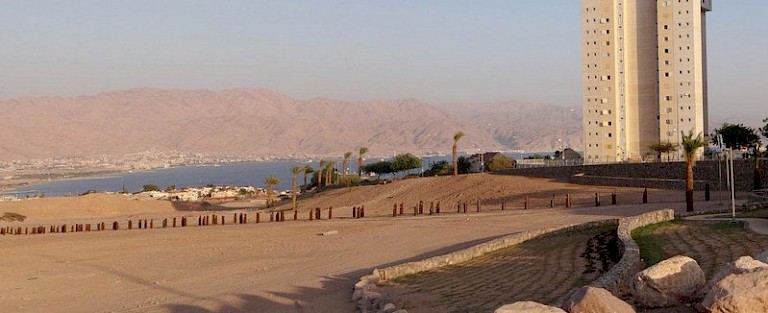The Way to Mecca
Artist: Bucy Schwartz
Location: Eilat, Israel
Year of completion: 2011
Researcher: Leon Tan
The Way to Mecca was originally conceived as a public artwork by artist Buky Schwartz, and landscape architect Zvi Dekel, in 1999. It has recently been under construction and is close to completion. According to the 1999 proposal, the project was to be sited at Wadi Shahamon (ravine) in Eilat, Israel. Described as a “sculptural / archaeological landscape project,” the work pays respect to Muslim pilgrims journeying to Mecca since at least the 7th century. These pilgrims frequently passed through Wadi Shahamon on their religious travels. 400 meters in length, The Way to Mecca is composed of over one hundred life-size sculptures representing the pilgrims to Mecca. It is a continual reminder that the Jewish and Arabic peoples have coexisted in certain regions for several centuries.
Eilat is a contentious region given competing claims over the centuries by Israelites, Romans and Muslims. Eilat is actually mentioned in the Book of Exodus in the Hebrew Bible. It was a trading partner of Ancient Egypt and Elim. The Arabic name for Eilat is Umm Al-Rashrash, and historically the city formed part of the Darb el Hajj or Pilgrims’ Road from Africa, through Egypt, to Mecca. As a public project, The Way to Mecca is significant for its references to the long duration of Muslim pilgrimage through Eilat en route to Mecca, given the ongoing conflicts engendered by the “formation” of the State of Israel after the world wars. According to the 1947 UN Partition Plan, the Eilat region was to form part of Israel. However, a 1906 Ottoman decree designates the area as Egyptian, as does the discovery of a mass grave of Muslims in military uniform (likely Egyptian) in 2008.
All copyright belongs to Shanghai Academy of Fine Arts, Shanghai University.






